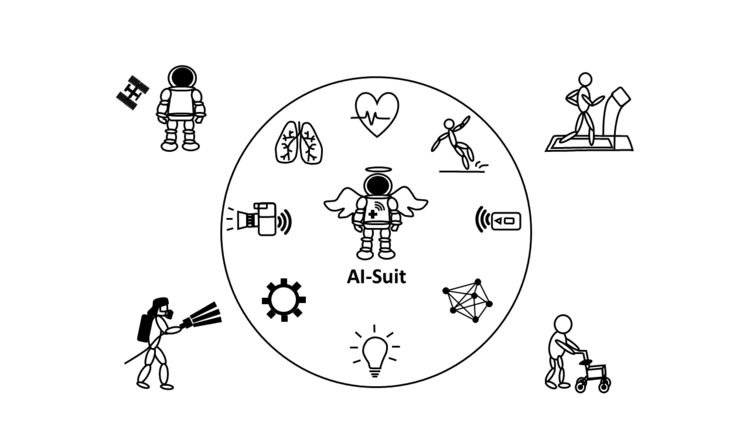AI-Suit
AI-Suit
AI-Enhanced Space Suit (Ai-Suit)
Motivation
With the commercialisation of space travel, the journey into space is becoming accessible to a wider public. In the future, it will not only be highly educated and trained astronauts who go into space. This will change the requirements for spacesuits and health requirements.
In order to be medically and technically prepared for this situation, new technologies and measurement methods are being tested and adapted to the new conditions.
Approach & objectives
Protective suits for space travellers are designed to protect vital functions during take-off, landing and missions in a vacuum. Today's suits are already equipped with various sensors, in particular for monitoring temperature and oxygen concentration. The recording of vital parameters ranges from punctual measurements to continuous measurements. The sensor data is recorded in the spacecraft and then sent to the ground station.
The overall aim of the AI-Suit project is to use artificial intelligence (AI) to continuously monitor stress levels.. In the future, critical health conditions will be detected at an early stage and the space travellers will receive targeted feedback. As critical events are detected locally, contact with the base station and the amount of data transmitted will be reduced.
Concepts for the design of miniaturised, AI-based and yet energy-efficient sensor patches and their implementation/evaluation will be investigated. The application should enable an optimised digital health monitoring of the astronauts and warn them in case of an immediate overload. For use in space, vital signs (e.g. blood pressure) provide important information on the effects of microgravity on the human circulation and, in combination with heart rate, are essential for determining the state of stress. The integration of expert knowledge ensures that the machine learning algorithms used are not a black box.
At the same time, the team is investigating how the knowledge and tools gained can be used in the medical field. One obvious example is the use of sensor technology for continuous monitoring in clinical settings.

Funding / Cooperation
German Aerospace Center (DLR)
Duration: 1.2.2022-31.7.2023
Participating partners
- Fraunhofer IMS
- TESAT - Spacecom


